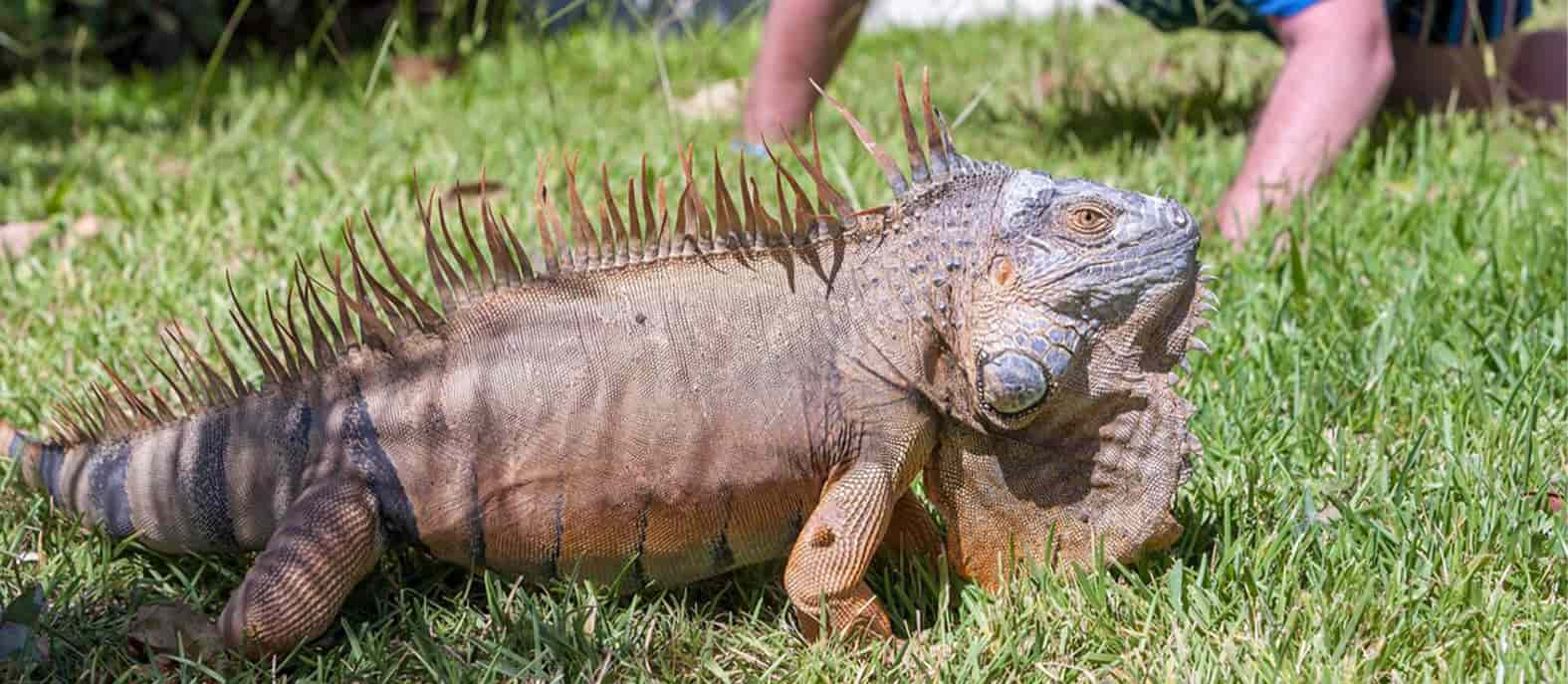Scientists state that many species of plants, animals, birds, and fish are critically endangered. The time for some endangered animals is rapidly running out as their population has declined by an average of 70% within the past 50 years. The U.N. Convention on Biological Diversity states that we are losing up to 150 animal species every day. And unfortunately, humans are the cause and the main threat to the survival of the animals that are going extinct. Research shows that the rapid decline in the species‘ population is mostly affected by climate change, deforestation, hunting, and other habitat destruction caused by regular human activity.
Over 40% of all currently existing species on Earth are in danger of extinction. The number of threatened species will reach a million in the following decades if these extinction rates persist or increase. This is undoubtedly a matter of concern for every human being on the globe because the extinction of specific species causes larger-scale environmental issues that endanger the stability of the whole Earth’s ecosystem.
Today we want to show you our top 10 of the most endangered species that are threatened with complete extinction because of humans.
Endangered Species List
Unfortunately, there are countless critically endangered species that will soon remain memories and become only pictures on encyclopedias’ pages. Here is the list of the most threatened species whose wild populations have reduced significantly over the last few years.
Vaquitas
Habitat: the northern end of the Gulf of California in Baja, California.
Population: no more than 10 individuals.
Main Threats: illegal fishing, fishing nets.
Conservation Status: critically endangered.
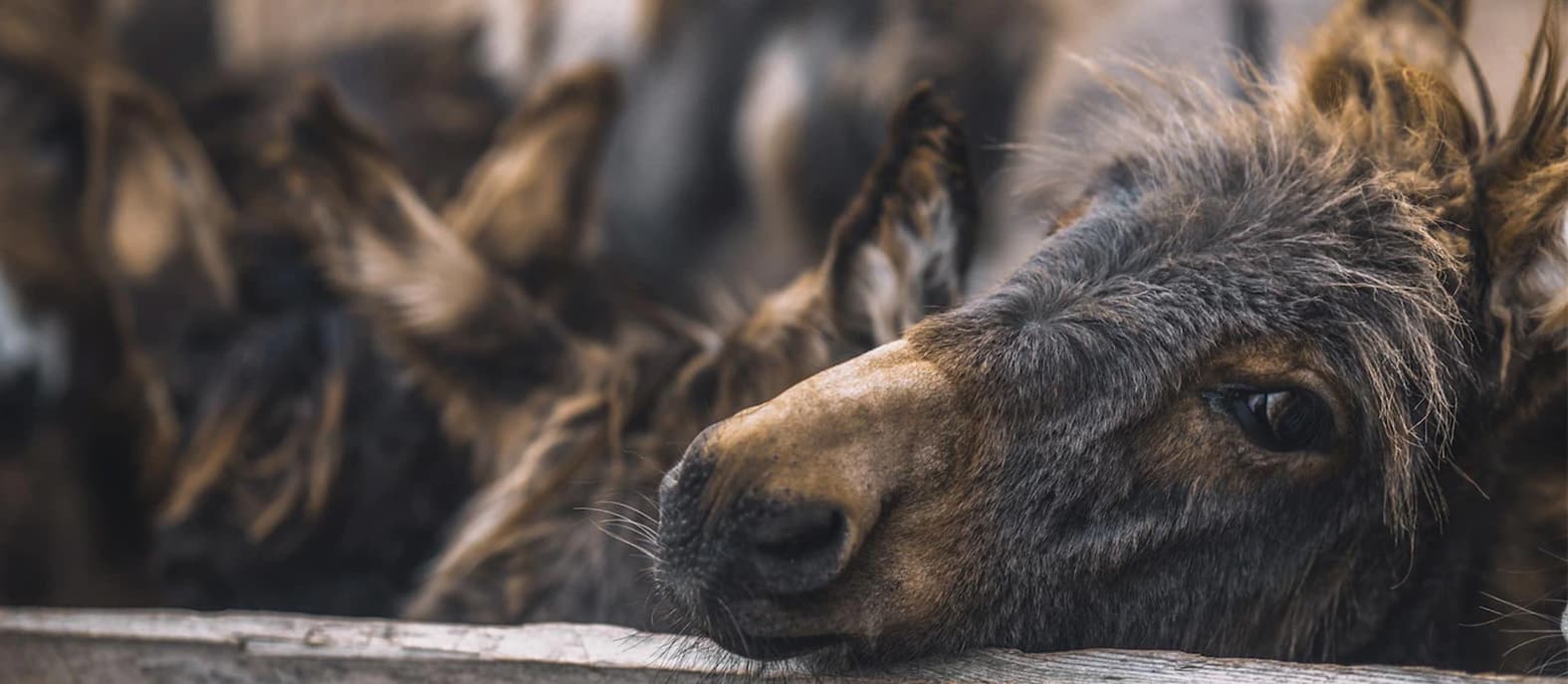
The vaquita is the smallest marine mammal. It is endemic to the northern part of the Gulf of California, which means that this is the only place on the planet where you can see this animal. The World Wildlife Fund reports that there are only 10 individuals of the vaquita at the moment. So, we can say that the vaquita is the most endangered marine mammal in the world.
The biggest threat to vaquitas comes from gillnets, which anglers use for totoaba fishing. Totoaba is a large fish and a protected species that is pretty popular with fishermen for its swim bladder. In 2016, conservation efforts led to the banning of these fishing nets in the northern end of the Gulf of California. However, despite conservation efforts, illegal fishing goes on and thrives. At the same time, conservationists keep working hard to enforce the ban and are also focused on the depopulation of totoaba fishing.
Asian Elephants
Habitat: India, Sri Lanka, Sumatra.
Population: about 52,000 individuals.
Main Threats: illegal killing, habitat loss.
Conservation Status: Endangered.
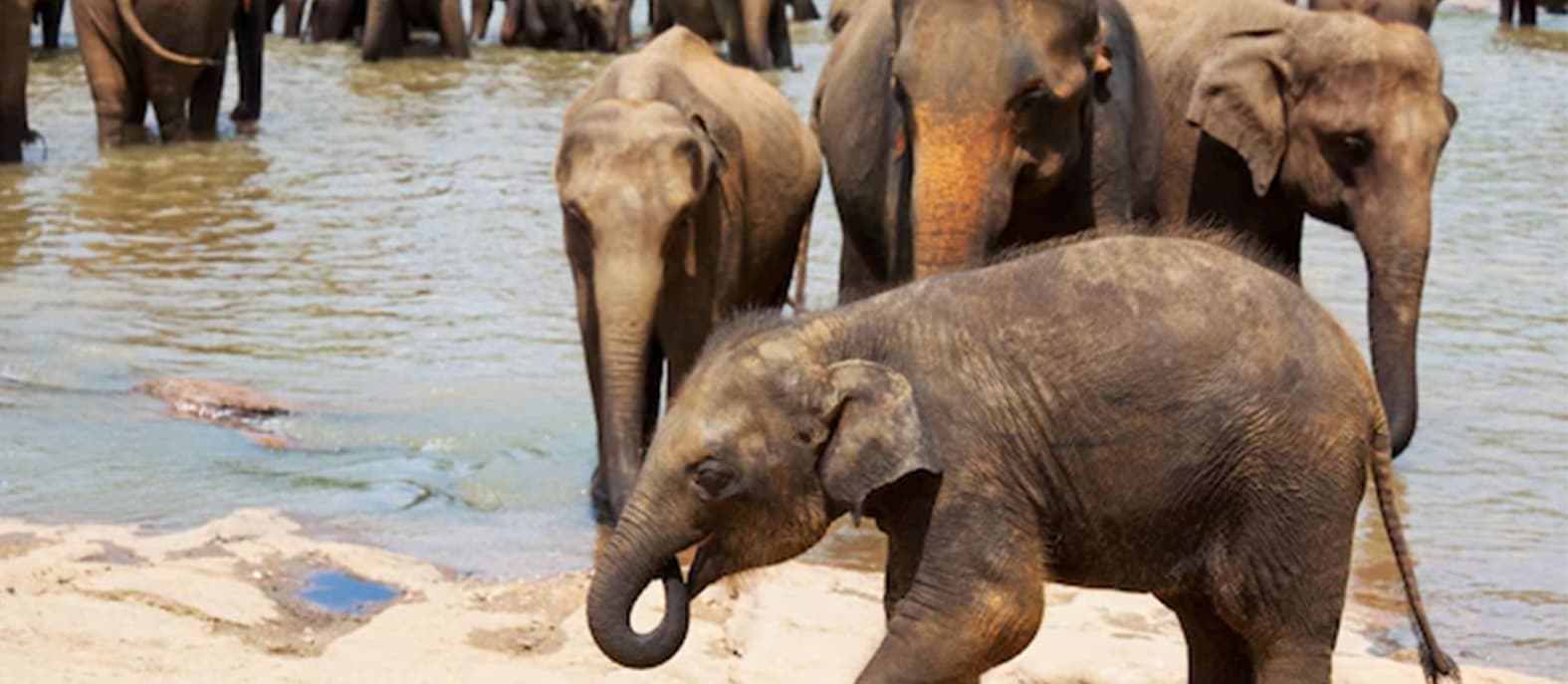
The Asian elephant population has declined by almost 50% over the past 75 years, which is alarming for conservationists. Asian elephants that live in Sumatra are most at risk. Their population is being poached toward extinction, with only about 2,500 individuals left in the wild. The population is declining dramatically due to the loss of about 70% of its habitat.
Asian elephants face the threat of extinction mainly due to poaching as their ivory is considered valuable. Also, due to human-elephant conflicts, elephant habitats are subject to destruction, which leads to a rapid decline in their population.
Amur Leopards
Habitat: Russian Far East, some regions of China.
Population: no more than 70 individuals.
Main Threats: poaching, wildlife, habitat degradation.
Conservation Status: critically endangered.
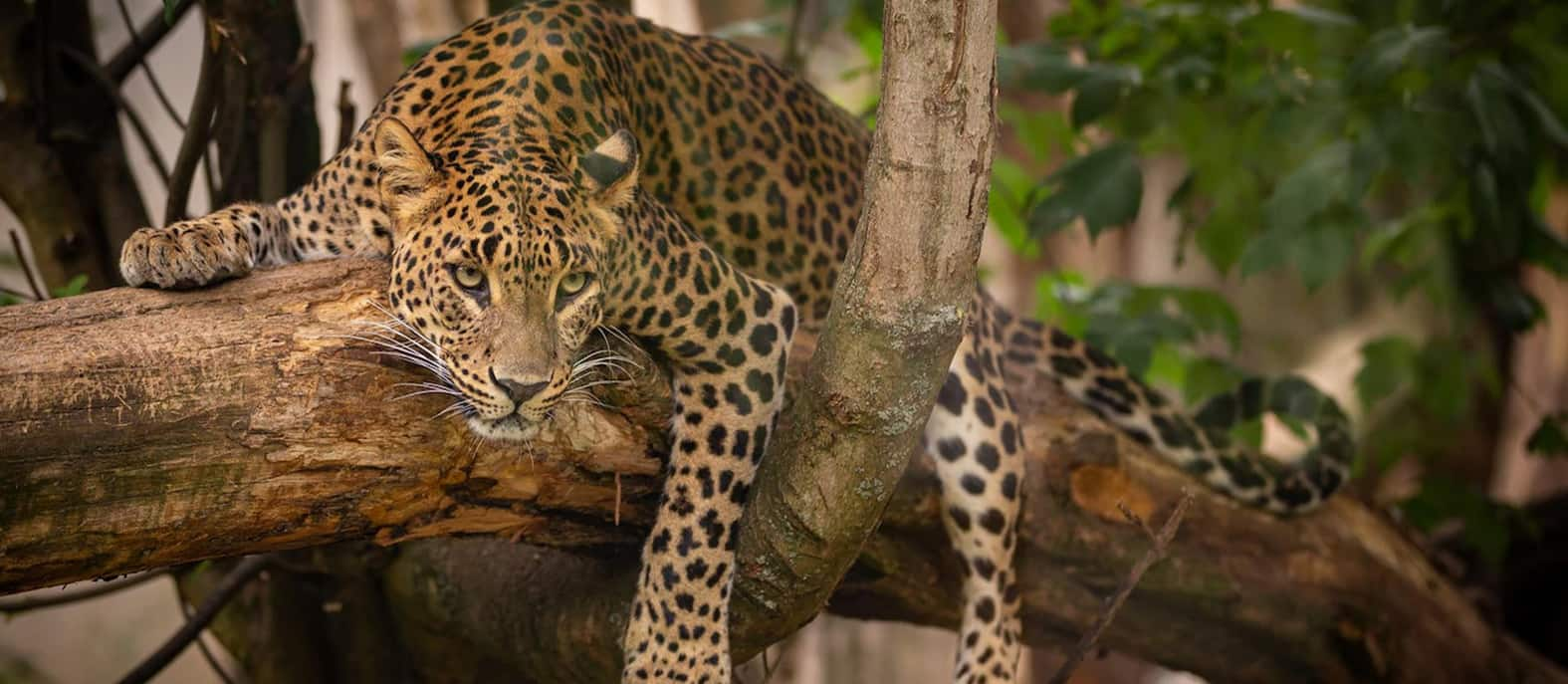
Amur leopards are considered the most endangered species among all the big cats on planet Earth. Now their number is about 70 individuals, although there were about 92 of them when they were included in the IUCN Red List of Threatened Species in 2014.
Unfortunately, Amur leopards are most often killed by humans because of their beautiful fur, which is in big demand by poachers. In addition to their beautiful coats, Amur leopard bones are used in traditional Asian medicine, which makes these animals even more attractive in the eyes of poachers. Their population has also declined due to climate changes and both natural and human-made fires.
Mountain Gorillas
Habitat: east-central Africa (Virunga Volcanoes region and Bwindi Impenetrable National Park).
Population: between 1,000 and 2,000 individuals.
Main Threats: poaching, forest habitat loss and degradation, agriculture, and diseases.
Conservation Status: critically endangered.

Gorillas are usually divided into two types – the Eastern gorilla and the Western gorilla. In their turn, both these two species have two subspecies. Unfortunately, the population of only one subspecies of the Eastern gorilla is relatively safe. The remaining three species, which are Mountain Gorillas, are Critically Endangered on the IUCN Red List of Threatened Species.
The rapid decline in the population is mostly associated with human beings, as it typically happens with most animals that are going extinct. Among the factors that cause the decline of the Mountain gorilla are poaching and habitat loss due to human conflict.
Unfortunately, gorillas are rather slow to recover, as females give birth once every 4-6 years due to a low reproductive rate. According to the expert population estimates data, there are only between 1,000 and 2,000 mountain gorillas left in the wild. However, Mountain gorillas are showing a promising recovery compared to previous years due to people’s intervention through the International Gorilla Conservation Programme. For comparison, the total number of mountain gorillas at the end of 2012 didn’t exceed 880 individuals.
Nevertheless, the threat remains. Scientists are still concerned and note that we can only save Mountain gorillas through our joint efforts. If things stay the same, Mountain gorillas risk disappearing forever in the next decade.
Rhinos
Habitat: South Africa, Namibia, Zimbabwe, Kenya, Mau-Mara-Serengeti, and coastal Tanzania.
Population: about 22,000 individuals.
Main Threats: poaching, habitat loss.
Conservation Status: endangered (black, Sumatran, and Javan rhino species are critically endangered).
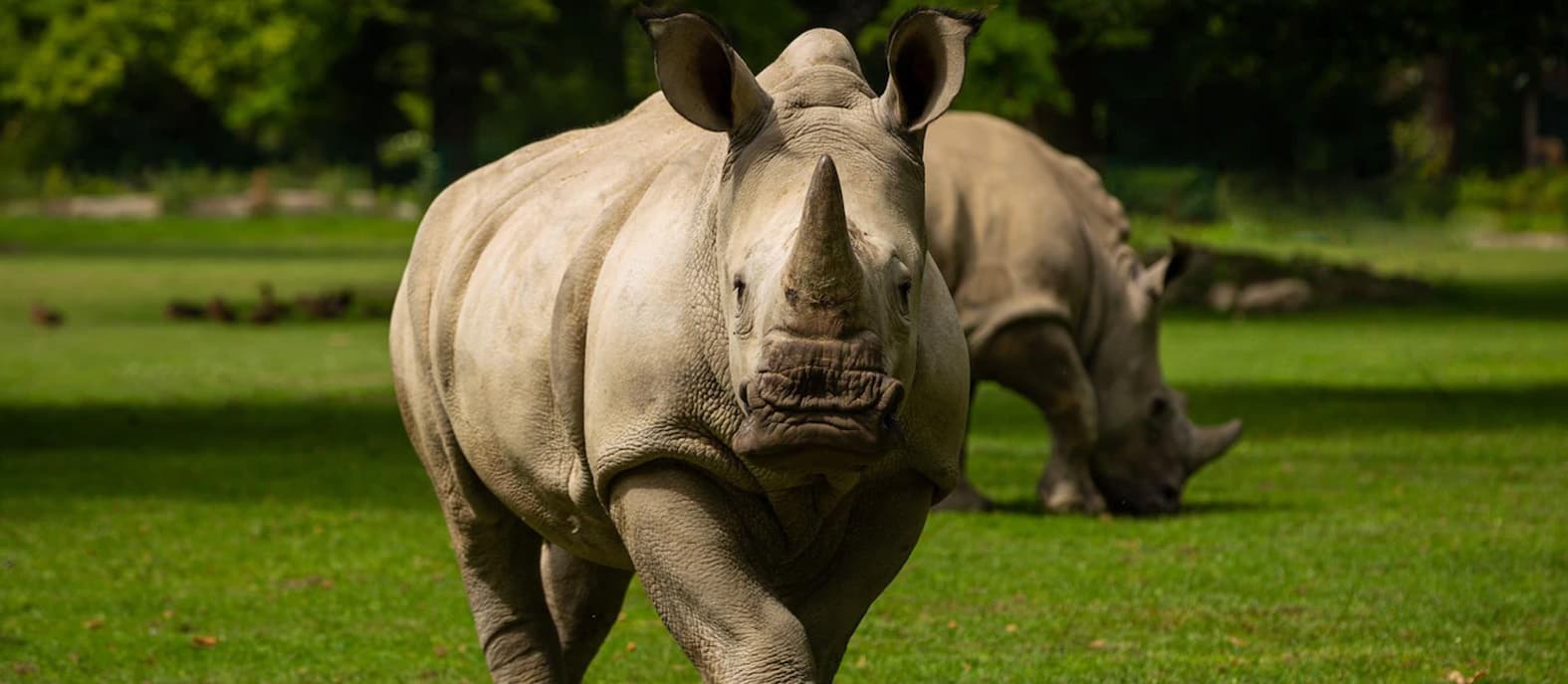
Rhinos are one of the most endangered animals that suffer greatly at human hands. Unfortunately, the rhinoceros’ distinctive horn is considered a symbol of wealth and is also widely used in traditional Chinese medicine. For this reason, rhinos are very popular with poachers. The price that people are willing to pay for such a “valuable trophy” on the black market also fans the flames. The cost for 1 kilo of Javan rhino horn can be up to $30,000.
By the way, the Javan rhino is the species that is closest to extinction. Their wild population totals between 45 and 66 individuals. The last known safe place for Javan rhinos is the Ujung Kulon National Park. However, the area is also adversely affected by the invasive Arenga palm, which gives the rhinos less food to consume and less space to wander.
Saola
Habitat: Annamite Mountains of Vietnam and Laos.
Population: unknown (supposed to be less than 750 individuals).
Main Threats: hunting, illegal wildlife trade.
Conservation Status: critically endangered.
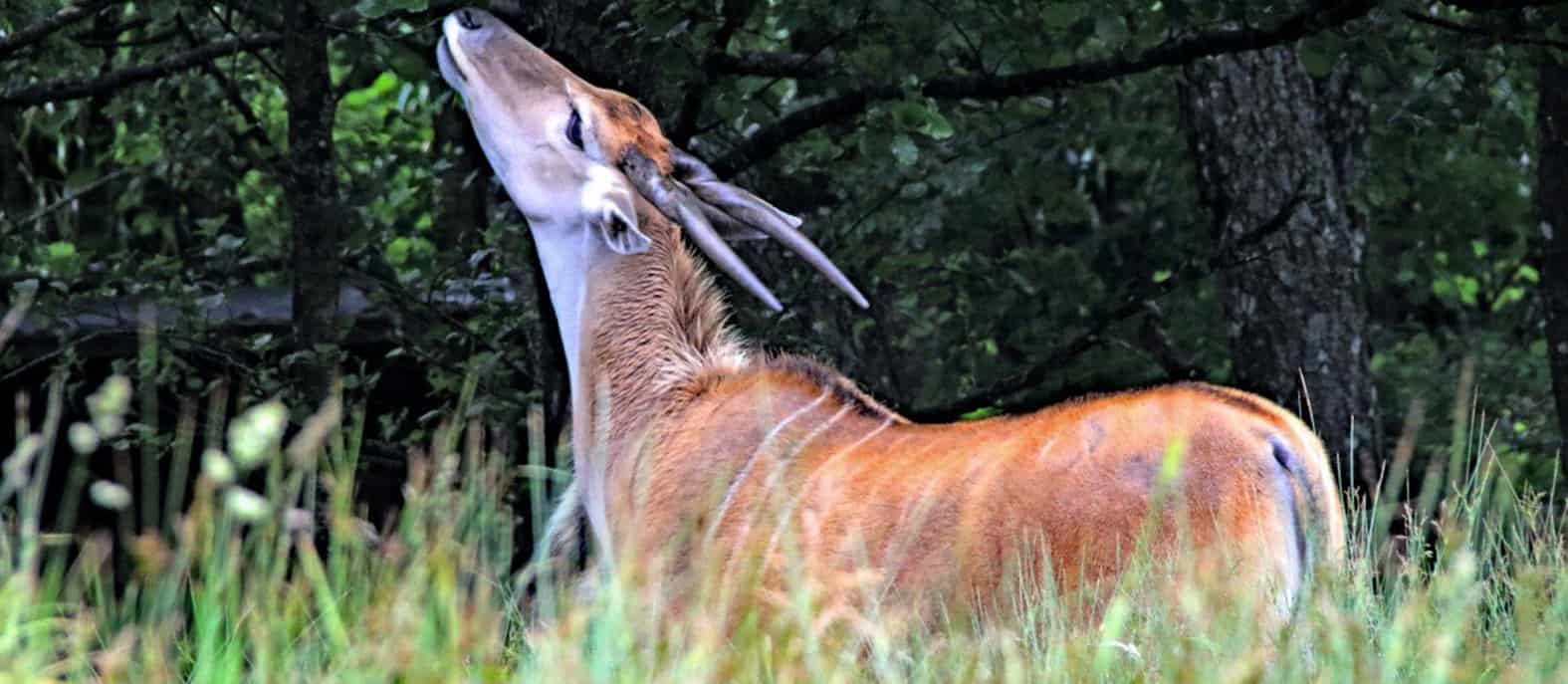
Also known as an Asian unicorn, the Saola is one of the fastest and rarest large mammals on our planet. Surprisingly, Saola became known to science relatively recently, only in 1992. Due to the difficulty of observing the Saola, no official surveys have yet been conducted to determine the population size. However, their population is believed to be only a couple of hundred individuals.
The main threat to Saola is illegal hunting. Poachers install thousands of wire cable snares. Local Vietnam conservationists have removed over 130,000 of such snares since the inception of the Saola conservation program.
Sea Turtles
Habitat: all around the world in shallow bays, estuaries, coastal waters, and lagoons.
Population: about 1,133,000 individuals.
Main Threats: pollution, Illegal harvesting, climate changes.
Conservation Status: critically endangered.

There are two types of sea turtles on the Red List of Threatened Species – Kemps Ridley Turtles and Hawksbill Turtles. There are also Leatherback Sea Turtles that are marked as Vulnerable, although their population is rapidly declining.
The major threat to a sea turtle is caused by illegal harvesting or, more simply, hunting. Their eggs, shells, skin, and meat are of greatest interest to poachers. Climate change, sea level rise, and water pollution are also factors that are not helping to increase the population of sea turtles. The fact is that sea turtles lay their eggs in the sand, and the sand temperature determines directly affects the sex of hatchlings. Thus, even a few-degree deviation of sand temperature can lead to a significant distortion of the sex ratio of populations. Even now, about 90% of sea turtles are females.
Sunda Island Tigers
Habitat: remaining patches of forest on the Indonesian island of Sumatra.
Population: fewer than 400 individuals.
Main Threats: poaching, deforestation.
Conservation Status: critically endangered.
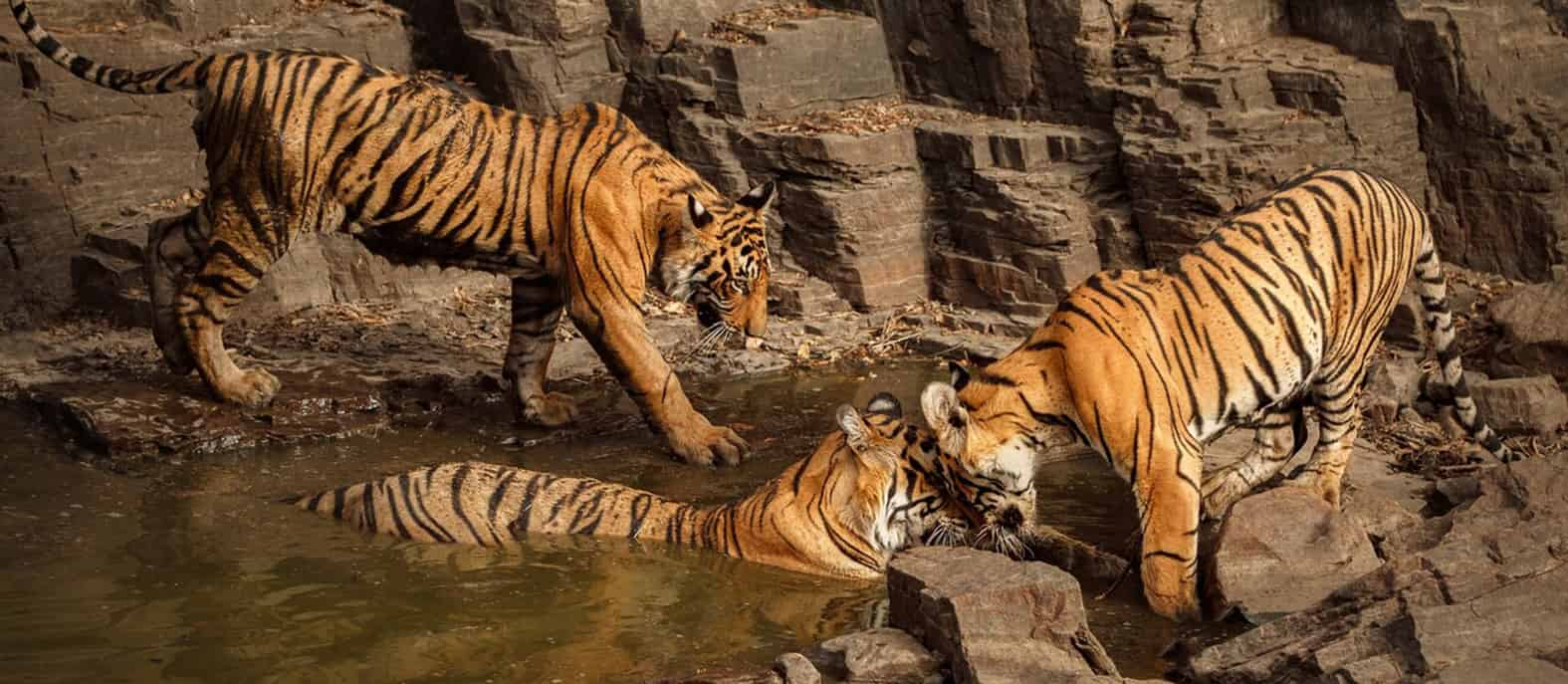
Tigers are globally facing extinction and survival problems, with only 3,500 individuals remaining in the wild. However, while other species are listed as “Endangered animals,” Sumatran or Sunda Island sub-species are listed as “Critically Endangered.” Like their Javan and Balinese counterparts that sadly end up extinct, Sunda Island Tigers keep losing their natural habitat and are close to the edge. There are no more than 400 of these feral cats left in the wild, and the forecasts are disappointing.
Unfortunately, tigers also face illegal hunting for traditional medicine and are popular with poachers due to their beautiful fur. Also, tiger-human conflict includes accelerating deforestation, which leads to the loss of habitat and prey.
Gharials
Habitat: rivers of India, Bangladesh, Nepal, Bhutan, Pakistan, and Myanmar.
Population: fewer than 250 individuals.
Main Threats: human intervention, fishing gear, hunting.
Conservation Status: critically endangered.
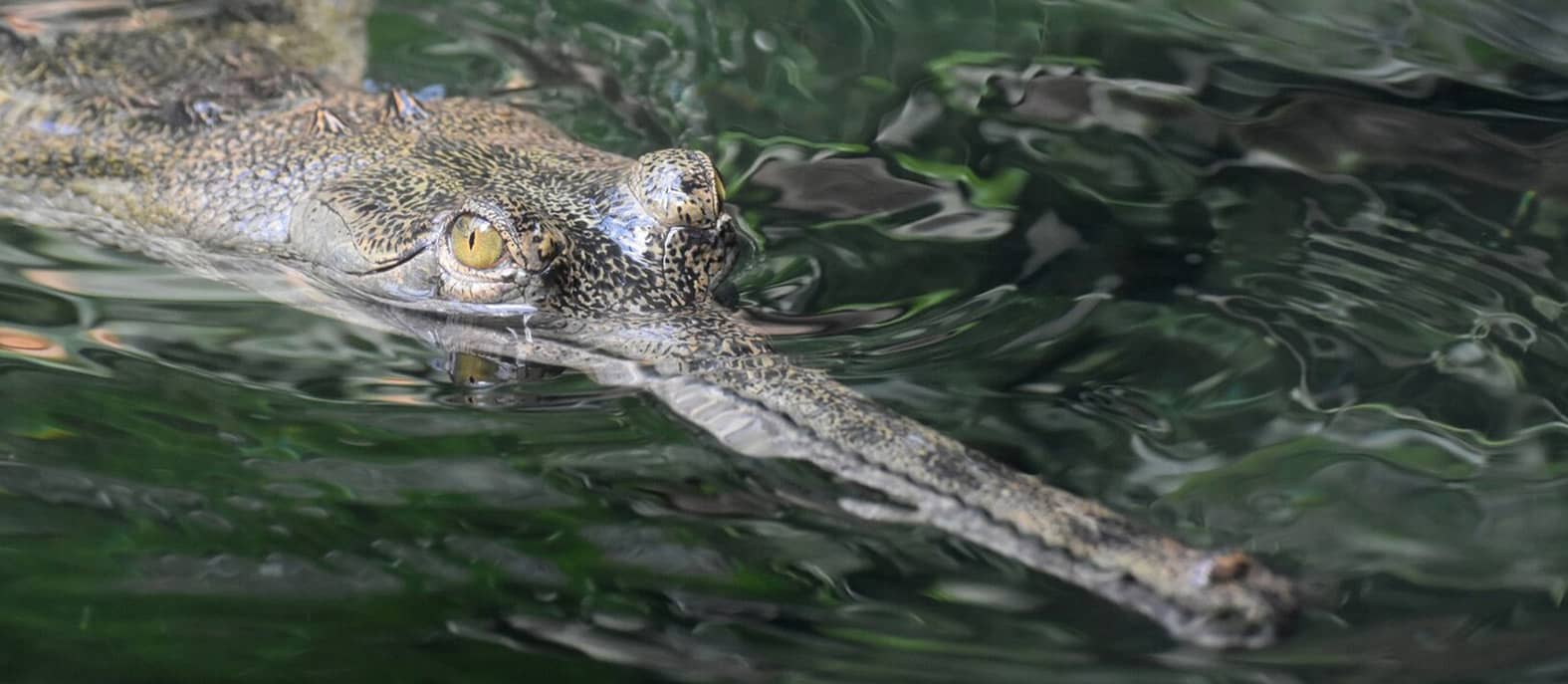
These fish-eating freshwater crocodiles are known for their long, slender snouts, which give them their name (the bump on the end of the snout is reminiscent of a large pot that is called Ghara). Gharials go to land mainly to lay eggs. They usually spend most of their lives in the water, hunting small fish, frogs, tadpoles, and insects. There are now only 2% of Gharials’ natural range. It means that their population declined extremely by about 98% compared to their historical range in the 1930s.
Unfortunately, almost all the problems that caused the sharp decline of the Gharials’ population are closely related to human beings. Poachers pay attention to these crocodiles because of their use in traditional medicine. Also, Gharials face threats such as fishing nets, habitat loss, and pollution of freshwater resources.
Kakapos
Habitat: Codfish, Anchor, and Little Barrier Islands that are free of predation.
Population: about 250 individuals.
Main Threats: predators, disease, genetic inbreeding, infertility.
Conservation Status: critically endangered.
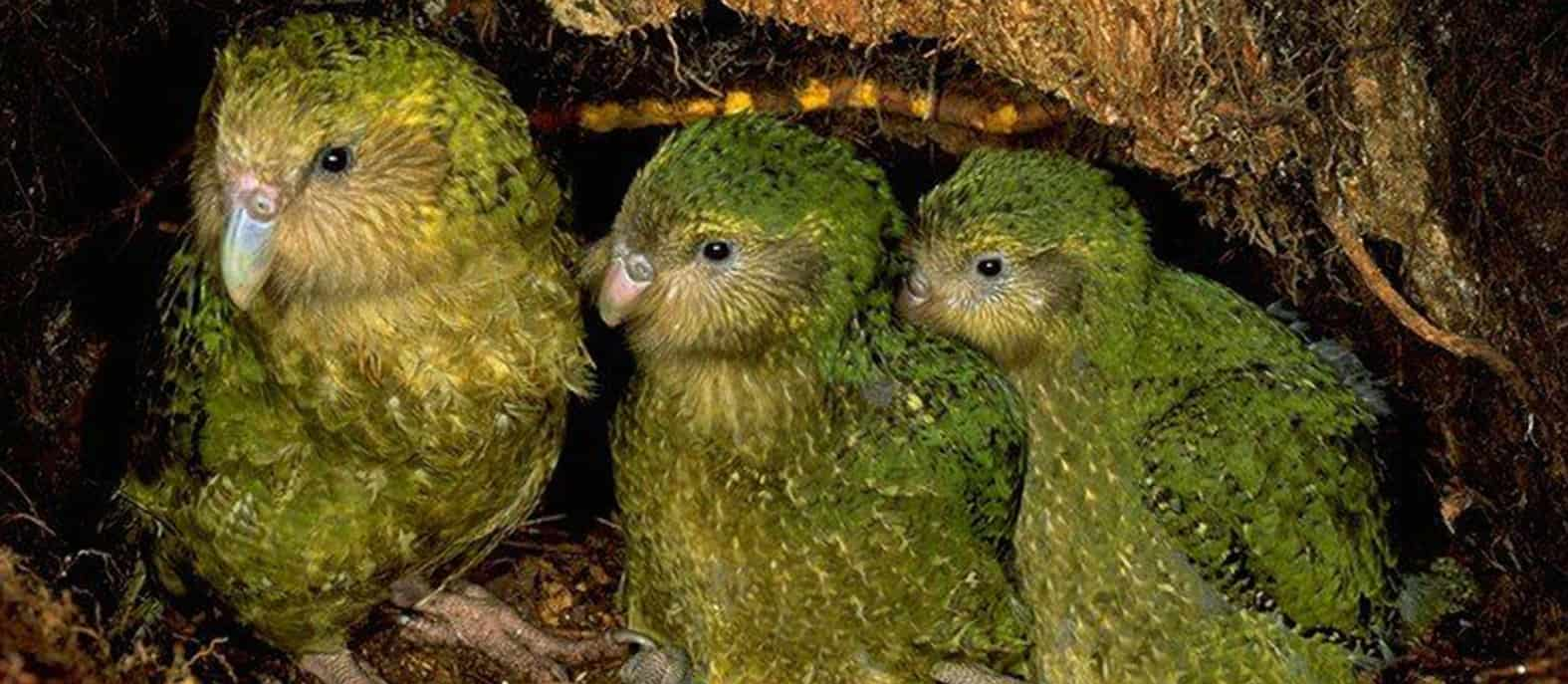
Kakapo is a type of ground-dwelling parrot that can only be found in New Zealand and only on certain islands off the coast of the southern part of the country. Their population is estimated at about 250 individuals. Kakapos are nocturnal birds that are listed as critically endangered. Rangers now use transmitters to track the population. Each Kakapo is outfitted with transmitters and has its own individual name.
The biggest threat to the Kakapo comes from predators such as stoats and feral cats. Since females leave the nests unattended when they fly away to hunt, predators can also encroach on eggs.
Thanks to the efforts of conservationists, the Kakapo population is increasing, which is positive news. However, it should be noted that the genetic diversity of the remaining birds is not very high, and this may lead to survival problems in the future.
How Can We Help Endangered Animals?
By changing the environment to suit their needs and improving the living conditions of society, humans are capable of consciously or even unintentionally causing irreparable damage to our planet Earth and its natural world. That is why we must think about preserving the world around us on a daily basis. And this is one of the most important things that each of us needs to contribute to.
Sometimes people just don’t know where to start. It may seem that while you’re away from the wildlife problems, being busy with your daily business in the bustle of the metropolis, you don’t have many options to help. However, you don’t have to become a ranger or join the ranks of conservationists to lend a helping hand to endangered animals. Your individual contribution can be important and significant, even if you don’t think it’s a big deal. After all, all big things are made up of many small steps.
You can contribute at personal, professional, and political levels to help endangered animals. First and most obvious, you can become a volunteer and join the community that takes action toward stopping climate change. Another step you can take is to join eco-tourism programs. You can also support conservation efforts by donating to organizations and programs that conserve endangered species. There are many trusted funds, such as the International Union for the Conservation of Nature, Defenders of Wildlife, or the World Wildlife Fund.
Also, you can join protest movements to express your concerns and get your point across to the people in the political arena who make responsible decisions. Support those politicians who will champion effective climate action by governments. With these simple steps, you can make a huge difference. Even such small steps will be much more effective than remaining indifferent. Many animal species are now waiting for people to help them.
Bottom Line
Unfortunately, we’re now staying at the edge of ecocatastrophe. As long as humans think they have reached the pinnacle of the universe and don’t understand they are part of nature that can’t exist outside of it, the situation will get worse. Today we’ve learned more about 10 introduced species that are considered endangered, but in fact, we are dealing with between 10,000 and 100,000 animals that are going extinct each year. And over 8,400 of them are considered critically endangered. And the number of vulnerable species will continue to grow as long as deforestation, pollution, poaching, and illegal fishing continues.
That is why it is so important for us to unite our efforts in this fight. In addition, there are many ways to support conservationists and organizations that are aimed at helping endangered animals. Even if you can’t join any movement, you can still contribute to helping many endangered animals by donating or participating in politics.
